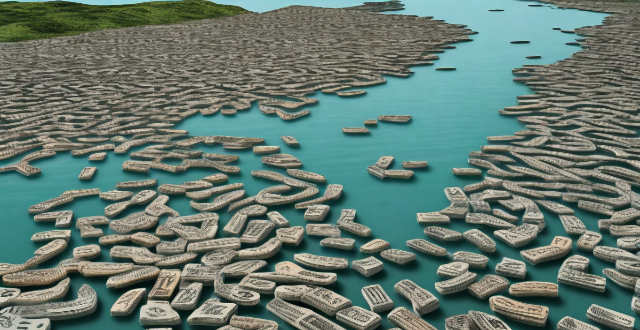Carbon credits, also known as carbon offsets, are a key component of global climate policy. They provide a way for individuals, companies, and governments to reduce their carbon footprint by investing in projects that reduce greenhouse gas emissions or sequester carbon dioxide from the atmosphere. The future of carbon credits is closely tied to the success of global efforts to mitigate climate change. Carbon credits play a crucial role in offsetting emissions from various sectors such as transportation, manufacturing, and energy production. The existence of a market for carbon credits encourages investments in low-carbon technologies and sustainable practices. Carbon credits are integral to the functioning of international agreements like the Paris Agreement. Countries committed to reducing their carbon footprint can use carbon credits to meet their targets more efficiently. One of the main challenges with carbon credits is ensuring their quality and effectiveness. There have been instances where the actual environmental benefit of a project does not match its claimed reduction in carbon emissions. Another issue is the persistence of the carbon reduction achieved by these projects. For example, if a reforestation project fails to maintain the growth of new trees, the sequestered carbon could be released back into the atmosphere. Carbon leakage occurs when emission reductions in one area lead to increased emissions elsewhere. This can happen if industries simply relocate to areas with less stringent regulations rather than adopting cleaner technologies. To address concerns about quality and verification, there will likely be a push for more rigorous standards and auditing processes within the carbon credit industry. Advances in technology will enhance the monitoring and measurement of carbon reduction projects, making them more transparent and reliable. As awareness grows about climate change, more individuals and organizations are expected to participate in carbon offset programs, increasing the demand for high-quality carbon credits. Carbon credits will increasingly be integrated with other climate policies such as carbon taxes and cap-and-trade systems to create a comprehensive approach to tackling climate change.

The Future of Carbon Credits in Global Climate Policy
Carbon credits, also known as carbon offsets, are a key component of global climate policy. They provide a way for individuals, companies, and governments to reduce their carbon footprint by investing in projects that reduce greenhouse gas emissions or sequester carbon dioxide from the atmosphere. The future of carbon credits is closely tied to the success of global efforts to mitigate climate change.
Role of Carbon Credits in Climate Policy
Offsetting Emissions
Carbon credits play a crucial role in offsetting emissions from various sectors such as transportation, manufacturing, and energy production. By investing in renewable energy projects or reforestation efforts, organizations can balance out their carbon emissions and work towards a net-zero goal.
Stimulating Low-Carbon Investments
The existence of a market for carbon credits encourages investments in low-carbon technologies and sustainable practices. This not only helps reduce overall emissions but also drives innovation in green technologies.
International Agreements
Carbon credits are integral to the functioning of international agreements like the Paris Agreement. Countries committed to reducing their carbon footprint can use carbon credits to meet their targets more efficiently.
Challenges and Controversies
Quality and Verification
One of the main challenges with carbon credits is ensuring their quality and effectiveness. There have been instances where the actual environmental benefit of a project does not match its claimed reduction in carbon emissions.
Persistence
Another issue is the persistence of the carbon reduction achieved by these projects. For example, if a reforestation project fails to maintain the growth of new trees, the sequestered carbon could be released back into the atmosphere.
Leakage
Carbon leakage occurs when emission reductions in one area lead to increased emissions elsewhere. This can happen if industries simply relocate to areas with less stringent regulations rather than adopting cleaner technologies.
Future Directions
Improved Standards and Verification
To address concerns about quality and verification, there will likely be a push for more rigorous standards and auditing processes within the carbon credit industry.
Technological Advancements
Advances in technology will enhance the monitoring and measurement of carbon reduction projects, making them more transparent and reliable.
Broader Participation
As awareness grows about climate change, more individuals and organizations are expected to participate in carbon offset programs, increasing the demand for high-quality carbon credits.
Integration with Other Policies
Carbon credits will increasingly be integrated with other climate policies such as carbon taxes and cap-and-trade systems to create a comprehensive approach to tackling climate change.
In conclusion, while carbon credits face several challenges and controversies, they remain a valuable tool in the fight against climate change. With continued refinement and broader adoption, they have the potential to play an even greater role in achieving global climate goals.